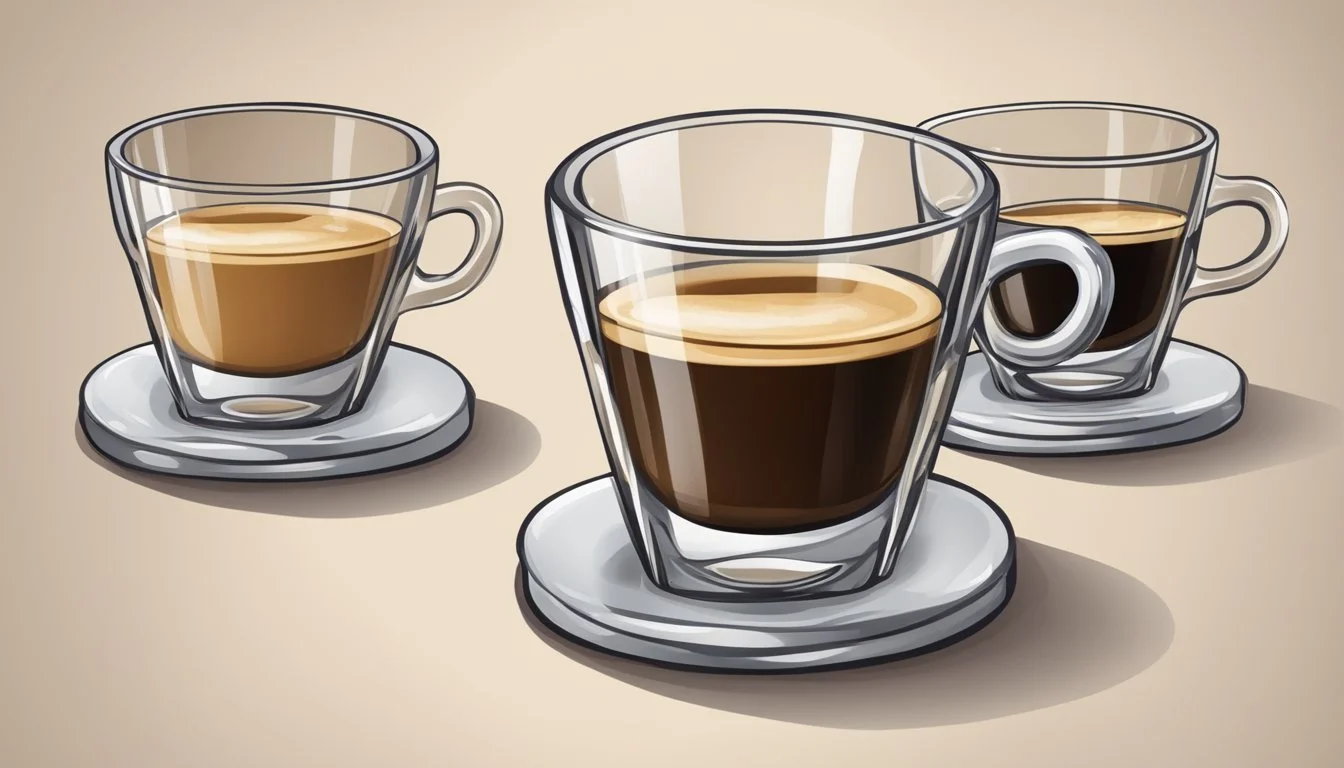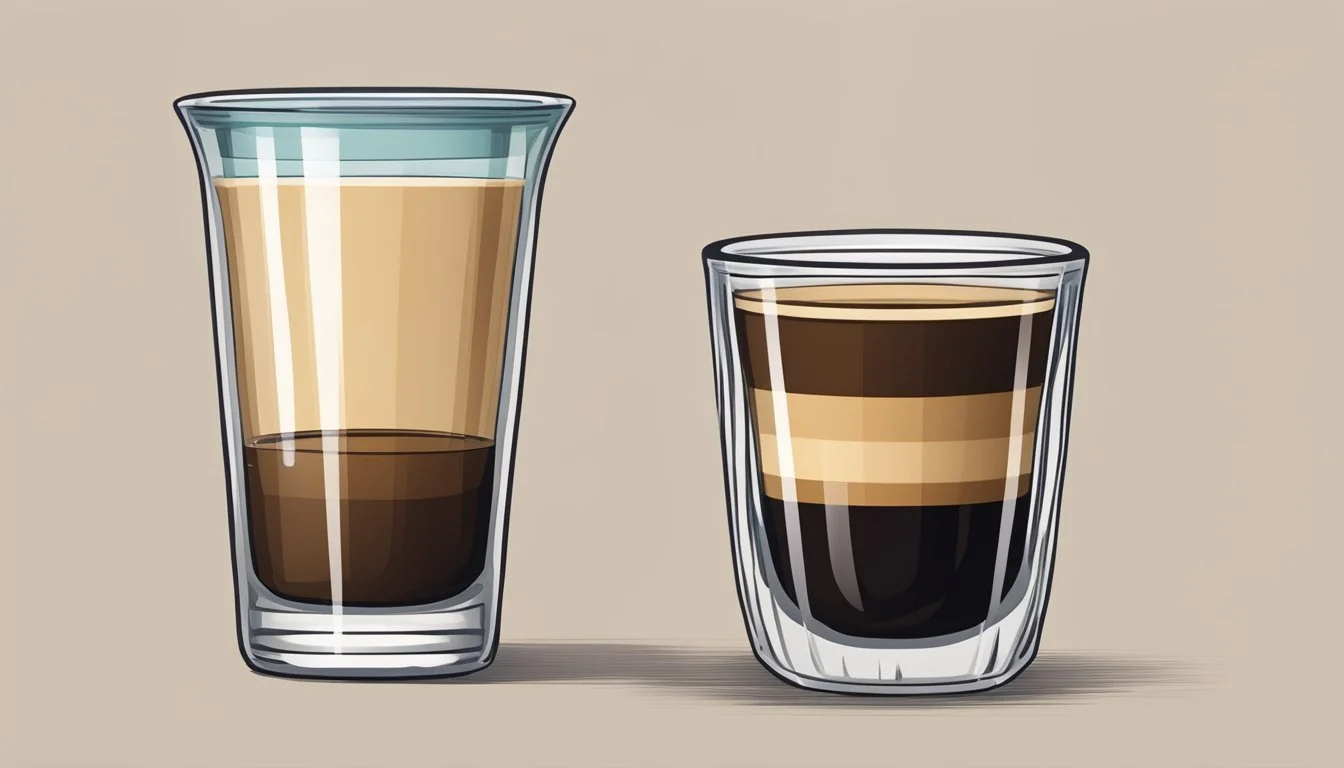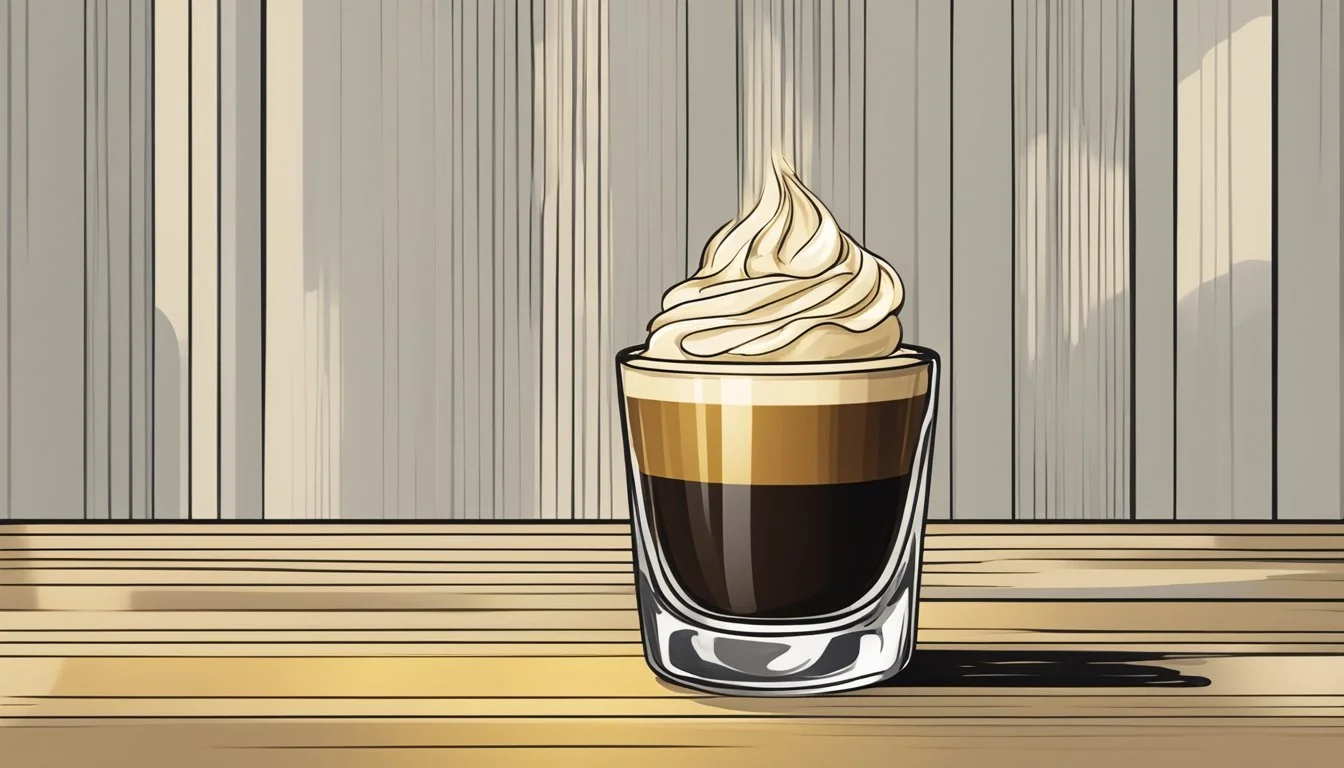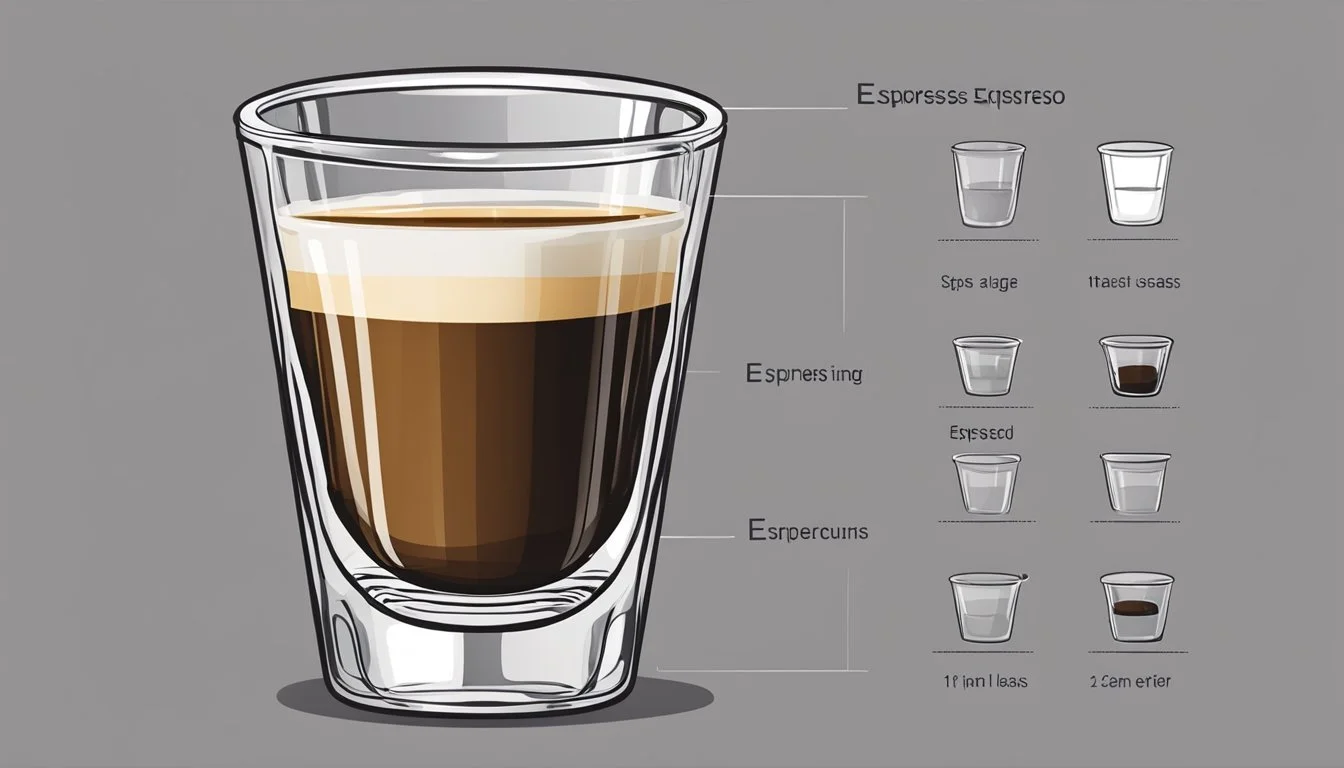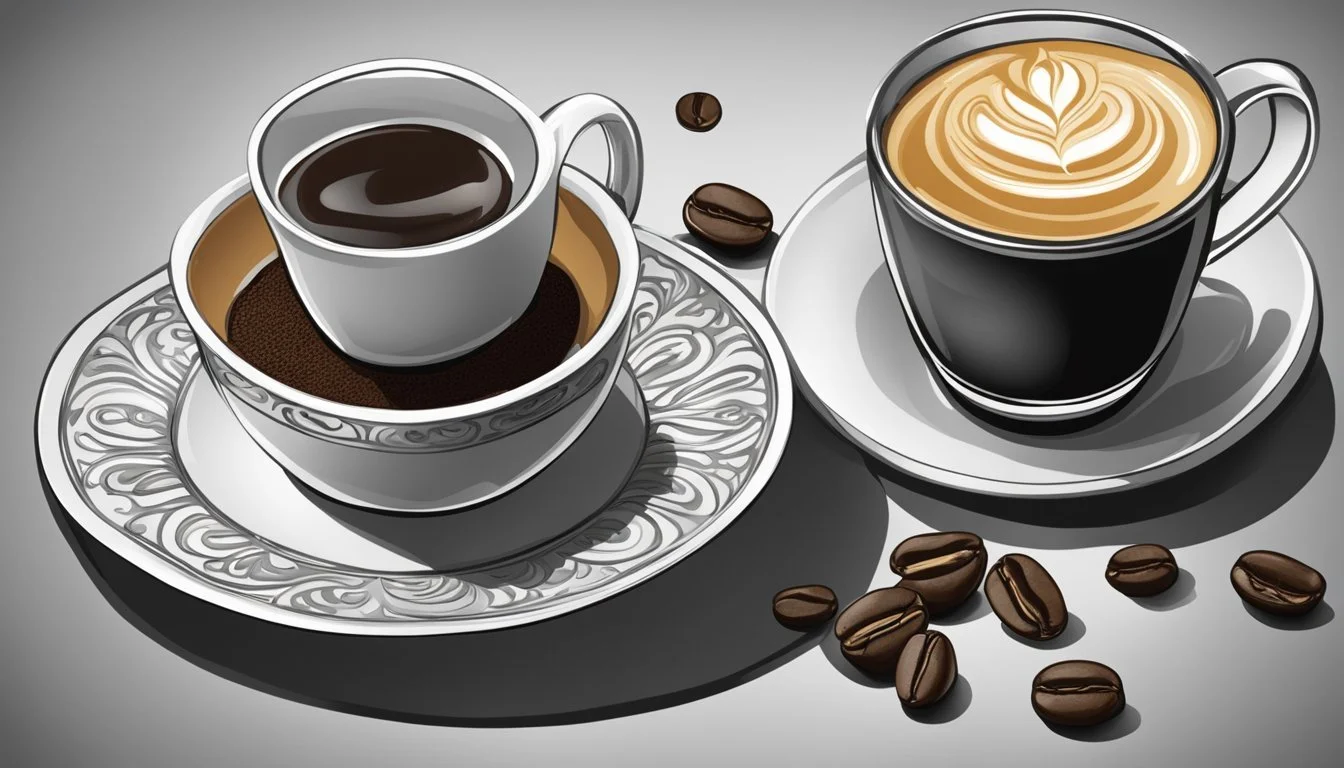How Many Ounces in a Shot of Espresso
Understanding Coffee Measurements
Espresso is a highly concentrated form of coffee that is beloved by many for its robust flavor and rich crema. Key to the preparation of this small but mighty beverage is the understanding of its measurement, which is critical for both baristas and enthusiasts alike. A standard shot of espresso uses one fluid ounce of water, which translates to about 30 milliliters. This precise volume of water passes through finely-ground coffee beans under high pressure to produce the espresso shot.
For those looking to delve deeper, the double shot of espresso, or doppio, is equally standardized and contains two fluid ounces, doubling both the volume of water and the amount of coffee used in a single shot. This results in double the quantity without altering the essence and flavor profile characteristic of a properly executed shot of espresso. Understanding these measurements is vital for anyone who aims to master the art of espresso making or to simply enjoy a consistent quality in their daily cup.
Understanding Espresso
When exploring espresso, it is essential to grasp its rich history, the specifics of an espresso shot, the different types encountered, and the machinery involved in its creation. Each component plays a vital role in crafting what coffee enthusiasts regard as one of the most concentrated and flavorful coffee experiences.
History of Espresso
Espresso, as it is known today, has its roots in Italy in the early 20th century, where the method of pressurizing hot water through finely-ground coffee was perfected. This technique produced a stronger, quicker brew, hence the name 'espresso'—Italian for 'express.'
What is an Espresso Shot?
An espresso shot is a concentrated coffee beverage, typically measuring around 1 fluid ounce (30 milliliters). It's made by forcing hot water through finely-ground coffee beans using an espresso machine. The ideal ratio often cited is 1 ounce of water to 7 grams of coffee.
Types of Espresso Shots
Espresso shots come in various styles, impacting flavor and strength:
Single Shot (solo): 1 fluid ounce of espresso.
Double Shot (doppio): 2 fluid ounces of espresso, using double the amount of coffee grounds.
Ristretto: A 'restricted' shot using less water, resulting in a more concentrated espresso.
Lungo: A 'long' shot where more water passes through the espresso, yielding a less concentrated variation.
Shot Type Water Coffee Grounds Volume Single 1 oz 7g 1 fl oz Double 2 oz 14g 2 fl oz Ristretto <1 oz 7g <1 fl oz Lungo >1 oz 7g >1 fl oz
The Espresso Machine
The espresso machine is pivotal in the making of an espresso shot. It heats water to the ideal brewing temperature and then forces it through the compressed coffee grounds. Machines range from manual lever-press models to sophisticated automatic and semi-automatic variants, each affecting the espresso's extraction and final taste.
Espresso Measurements
In the realm of espresso coffee, precision is paramount. Drinks are defined by the exactness of their volume and ratios, which establish the taste and strength of the final product.
Standard Shot Volume
A standard shot of espresso, commonly referred to as a single espresso, encompasses 1 fluid ounce (30 ml) of water. One fluid ounce is the key measure that determines not only the intensity but also the flavor profile of the espresso.
Weights and Ratios
When discussing espresso shots, it is crucial to address the coffee to water ratio. A standard single shot typically uses 7 grams of finely-ground coffee. A double shot of espresso, also known as a doppio, typically doubles the amounts, using 14 grams of coffee yielding 2 fluid ounces (60 ml).
Comparing Espresso and Coffee Measures
While the measure for a shot of espresso is quite standardized, it's interesting to note the contrast between espresso and regular coffee. Espresso measurements rely heavily on the precision of the weight and volume; 1 ounce of water to 7 grams of coffee. Regular coffee measurements are less exact and vary widely by individual preference and brewing method.
Espresso Preparation
To produce the perfect espresso shot, one must pay careful attention to the coffee grind, tamping technique, and the brewing process, ensuring the temperature and pressure are precisely controlled.
The Importance of Grind
The size of the grind plays a critical role in the flavor extraction of espresso. Espresso requires a fine grind that feels like powdered sugar but a little coarser. The goal is a grind that allows for the right balance of flavor extraction and brew time. The consistency of the ground coffee should allow water to flow through at the right rate, extracting optimal flavor without over or under-extraction.
Tamping Technique
Tamping involves compacting the coffee grounds into the portafilter evenly and with adequate pressure - typically around 30 pounds of force. Tamping helps in creating a smooth surface that the water can evenly penetrate through. It ensures uniform extraction as the water passes through the coffee grounds. The tamping pressure should be consistent to avoid channeling where water can pass through the coffee too quickly in certain areas, leading to a suboptimal shot.
The Brewing Process
The brewing process starts as soon as the machine forces hot water through the tightly tamped coffee grounds. Brew time, typically recommended to be around 25-30 seconds, is crucial for a balanced espresso shot. The brewing should yield about 1 fluid ounce for a single shot, using approximately 7 grams of coffee. For a double shot, which is quite common, this scales up to 2 fluid ounces using about 14 grams of coffee.
Temperature and Pressure
The temperature and pressure applied during extraction are pivotal for a quality shot of espresso. The ideal brewing temperature for espresso hovers around 200°F (93°C), with a margin of error of plus or minus a few degrees. The machine should apply a pressure of about 9 bars to push hot water through the grounds. This high pressure is what extracts the flavors and oils from the coffee grounds quickly, creating the characteristic rich and creamy espresso.
Espresso Quality and Characteristics
A key aspect of assessing espresso revolves around its complex flavor profile, the distinct crema, and the precision involved in extraction quality. These factors are crucial in distinguishing a well-crafted shot of espresso.
Flavor Profile
The flavor profile of an espresso is a delicate balance that should ideally exhibit a harmonious blend of sweetness, subtle bitterness, and rich body. High-quality espresso tends to have a robust flavor with notes that can range from fruity to chocolatey, depending on the beans used. It should not be overwhelmingly bitter; this is often a sign of over-extraction where too many bitter compounds are dissolved into the water.
Crema Significance
Crema is the creamy, thicker layer of foam on top of a shot of espresso, consisting of oils and dissolved solids from coffee beans. It is significant as an indicator of good extraction and fresh beans. The crema should be smooth and persistent, adding complexity and enriching the espresso's mouthfeel and flavor. A thin or lackluster crema may suggest stale beans or an under-extracted shot.
Extraction Quality
The quality of an espresso extraction is pivotal to its overall quality. A proper extraction ensures that the water passes through the coffee grounds at the right pressure and duration, resulting in a balanced cup. An under-extracted espresso will often taste sour and lack depth, while an over-extracted one can be overly bitter and harsh, overpowering the delicate flavors. Uniformity in grind size and consistency in tamping can greatly influence the extraction quality, affecting the espresso’s strength and flavor nuances.
Espresso Variations and Serving Styles
Espresso serves as the foundation for a wide array of drinks, varying in flavor, texture, and serving size. Exploring espresso variations reveals both the purity of the coffee in shots like ristretto and lungo, and the creativity that milk and syrups bring to classic and modern espresso-based beverages.
Popular Espresso Drinks
Espresso can be enjoyed in several concentrated forms including the Ristretto, Normale, and Lungo shots. A ristretto shot, often described as 'short and sweet,' typically contains 0.75 to 1.25 ounces of espresso. This is a more intense version with a richer flavor profile. In contrast, a lungo, or 'long pulled' shot, offers a milder taste with usually 1.25 to 1.75 ounces of espresso, resulting from a longer extraction time. Between these, the normale is what most consider a standard espresso shot, pulling 1 ounce of liquid espresso per shot.
Milk-Based Espresso Beverages
Milk transforms espresso into creamy beverages that are beloved around the world. The Latte, made with one part espresso to three parts steamed milk and a small layer of foam, and the Cappuccino, comprising equal parts espresso, steamed milk, and foam, are perhaps the most recognized. For those preferring a stronger coffee taste, a Double Ristretto serves as the base for a shorter, more flavorful drink with a velvety layer of milk.
Espresso Concoctions and Syrups
Innovation in espresso doesn't stop at milk. Baristas often incorporate various syrups, adding flavors like vanilla, caramel, or hazelnut to craft beverages such as Cafe Mochas or Dulce de Leches. The versatile espresso also features in colder treats like the Espresso Granita, a frozen dessert with a coffee base, typically sweetened with syrup and sometimes topped with whipped cream for extra indulgence. These concoctions provide a delicious twist to the traditional espresso, forming personalized drinks that cater to a range of palates.
Beyond the Basics
When considering the nuances of espresso, one must account for caffeine content, the influence of bean selection, and the precision of brewing techniques. Each plays a pivotal role in crafting a perfect espresso.
Caffeine Content
Caffeine levels in espresso can vary greatly depending on the coffee bean type and the size of the shot. A standard single espresso shot contains roughly 63 milligrams of caffeine. Comparatively, a double espresso contains twice this amount, due to the larger volume of coffee. Espresso made with Robusta beans tends to be more potent in caffeine content than Arabica, with Robusta containing about 2.2-2.7% caffeine and Arabica around 1.2-1.5%.
Choosing the Right Coffee Beans
The selection of coffee beans has a profound effect on the final taste of the espresso. Beans from different origins such as Guatemalan, Kenyan, or Sumatran have distinct flavors, with each bringing its own balance of acidic and bitter notes. For example, Kenyan beans often have a brighter acidity while Sumatran beans may offer a deeper, earthier taste. Darker roasts typically lend a bolder bitterness to the espresso, favored for their strength. The Specialty Coffee Association advocates for using finely ground, high-quality, freshly roasted beans to achieve the best espresso.
Advanced Espresso Techniques
Mastering espresso requires understanding advanced techniques such as adjusting brewing time and temperature to extract the ideal flavor profile. Machines with a PID (Proportional-Integral-Derivative) controller allow precise control over temperature, leading to a consistent espresso. A double espresso, or doppio, requires a careful balancing act of doubling both the coffee grounds and water without altering the extraction time. Triple shots and quads are more challenging due to the increased complexity in maintaining flavor balance and consistency.
Equipment and Maintenance
Quality espresso extraction depends heavily on the right equipment and meticulous maintenance. Properly selected and maintained machines and grinders are crucial for achieving the desired ounce of espresso per shot.
Choosing an Espresso Machine
Selecting an espresso machine is pivotal to the consistency and quality of the shot. The ideal machine should maintain stable temperature and pressure throughout the extraction process. For instance, commercial-grade machines used by Starbucks utilize advanced technologies to ensure each shot is consistent. The choice of a machine might range from single-group head machines for low volume needs to multiple group heads for higher demands.
Grinder Selection and Care
A grinder is just as important as the espresso machine itself. The grind size needs to be fine enough for espresso, which requires a burr grinder for even and precise grounds. One should invest in a high-quality grinder and perform regular maintenance. This includes:
Cleaning: Removal of old grounds to prevent stale flavors.
Calibration: Checking and adjusting the grind size periodically to ensure consistent extraction.
Regular Cleaning and Upkeep
Maintenance of the espresso machine and grinder ensures longevity and the best espresso flavor. This should include:
Daily: Rinsing the portafilter, cleaning the group head, and wiping down the machine surfaces.
Weekly: Backflushing with a cleaning agent to remove coffee oil residue.
Monthly: Deep cleaning of the grinder and replacement of water filters to prevent scale buildup.
By adhering to a rigorous cleaning and maintenance schedule, one can extend the lifespan of their equipment and guarantee the serving of high-quality espresso.
Cultural Significance of Espresso
Espresso serves as both a celebrated beverage and a meaningful symbol in societies around the world. It is recognized for its influence on the coffee industry and cultural practices.
Espresso in Society
The rise of espresso has led to its integration into social rituals and daily routines. In many countries, particularly in Italy, sipping a small, strong espresso is a cherished practice, with cafes serving as social hubs. This tradition has spread globally, with Starbucks and other coffeehouses instituting the espresso shot as a staple. These establishments have played a significant role in introducing espresso to a broader audience, turning what was once an exotic beverage into a daily pleasure for people from all walks of life.
Global Espresso Preferences
Different regions have developed distinct espresso preferences, influencing how this beverage is served and savored. In some locales, espressos are taken neat, while in others, a preference has emerged for “toasted” or lightly roasted beans. The Specialty Coffee Association recognizes various espresso-based drinks, highlighting the diversity of global tastes. These range from the creamy latte to the robust ristretto, attesting to the versatile nature of espresso brewing methods and grinds used across different cultures.
Influence on the Coffee Industry
Espresso has undoubtedly shaped the coffee industry, fostering a trend toward specialty and gourmet coffee offerings. The demand for high-quality espresso shots has led to innovation in brewing methods and equipment, with a focus on extracting the ideal flavor from finely ground coffee beans. The success of Starbucks and its espresso drinks helped popularize specialized coffee experiences, transforming consumer expectations and increasing the demand for barista expertise and quality equipment in both commercial and home settings.

